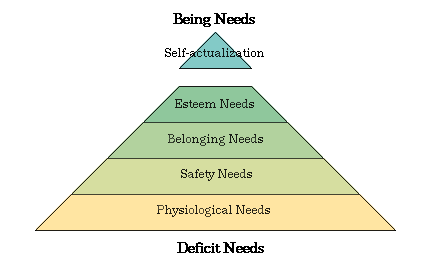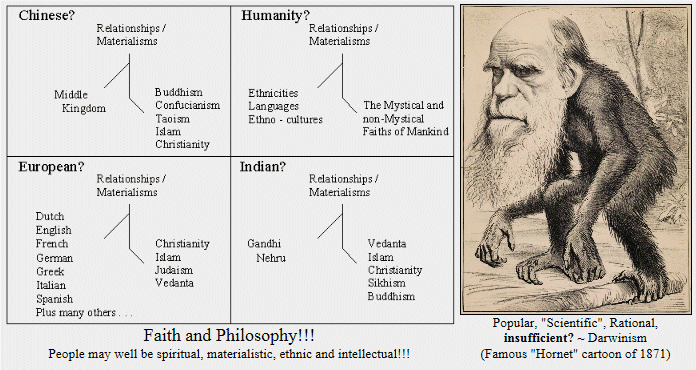Abraham Maslow's pyramid
Hierarchy of Needs

Abraham Maslow's pyramid is associated with the hierarchy of needs theory that Maslow originated circa 1943. According to this theory the most basic need is related to physiological survival - air to breate, water to drink, food to eat and sex to procreate.
Next in order of precedence comes a set of needs for such things as safety and security.
Once an individual has taken care of his or her basic physiological needs and feels safe and secure some degree of need for love and belonging may well rise to the forefront of their concerns.
Need for the respect of our fellow's, and for self-respect, are seen as being next in order of precedence.
Maslow referred to the four levels of need already mentioned as deficit needs, or D-needs. If you don't have enough of something -- i.e. you have a deficit -- you feel the need. Maslow saw all these needs as essentially survival needs. Even love and esteem are needed for the maintenance of health.
The last level of the pyramid is a bit different. Maslow used a variety of terms to refer to this level:- growth motivation (in contrast to deficit motivation), being needs (or B-needs, in contrast to D-needs), and self-actualization.
People might particularly try to realise their being needs once they have enough of food, security, belonging and respect but!!! enough of self-actualization is harder to attain. In point of fact self-actualization is seen as being somewhat addictive, once experienced it is something that people tend to want more and more of! Moreover people can only really pay attention to self-actualization needs once their more basic needs are satisfactorally met!
Abraham Maslow considered that very few people actually live, move, and have their being, within the realms of such self-actualization - mainly because people are generally involved in meeting the other needs already outlined.
Several things are associable with "self-actualization" - being independently confident in meeting life's challenges - in choosing between that which is more and that which is less worthwhile - and in feeling that one's time has been used creatively and inventively.
The Abraham Maslow hierarchy of need theory was later adapted to include a greater complexity in the area of self-actualisation. Under this adaption human needs included a thirst for knowledge and a need for aesthetical order and beauty prior to self-actualization and a "Transcendence" need beyond self-actualization where people would feel a need to help others to find fulfillment.
Is Human Being more truly Metaphysical than Physical?

Where this could, possibly, lead ...

N. B. The page mentioned in the graphic ~ roots.asp ~
has been replaced by this page
This 'knot of roots' insight features in:

